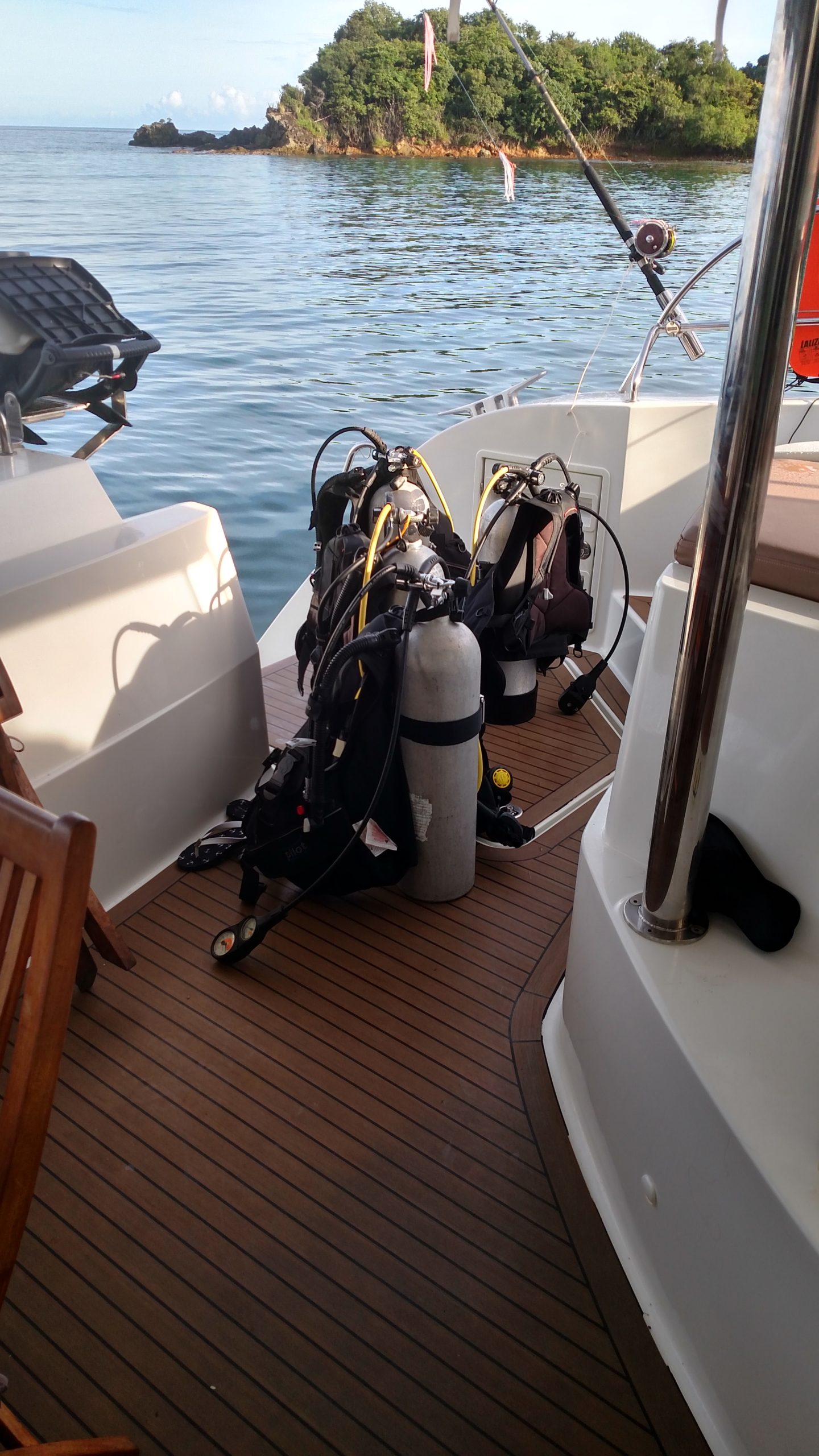1. SCUBA stands for Self Contained Underwater Breathing Apparatus
2. Roughly 2/3 of Earth’s surface area is covered by water.
3. Many people think a SCUBA tank contains oxygen. Although there is Oxygen in the tank, it is filled with the same air you and I breathe on a daily basis, which is 21% oxygen and 79% nitrogen. The tank is filled with air, the only difference is it is filtered and dried before it is put into the tank.

4. The first successful open-circuit scuba was designed in 1943 by Jacques-Yves Cousteau and Emile Gagnan.
5. Since your body is mostly made of water you don’t feel the pressure as you dive deeper. As long as you equalize the air spaces in your body you feel no pressure at all while scuba diving.
6. PADI, The Professional Association of Diving Instructors, is the largest certification agency. However, there are many certification agencies such as NAUI, SSI, YMCA, among others.
7. Scuba diving is not silent. In 1956 Jacques Cousteau and Louis Malle produced a documentary called “The Silent World.” However, it is not silent underwater. Reefs are alive with the crackling sound of creatures. It is an amazing experience to listen to the sounds of the reef. I’m not really sure why they called it The Silent World.
8. Colors disappear underwater. Light is a spectrum of colors, the particulate matter in the water and the water itself absorbs light. Some colors have different wavelengths and are absorbed sooner than others. Red, orange, yellow and green are mostly all absorbed above 100 feet. Everything deeper than that appears blue.
9. Underwater pizza delivery man Rob Doyle has a very unique job. He scuba dives to deliver pizza to guests staying a the Jules’ Undersea Lodge in Key Largo, Florida.
10. Too much of a good thing? You know your body needs oxygen, but did you know that if you go too deep your body can absorb too much oxygen. That’s why recreational scuba diving has limits of 130 feet for properly trained people. Going too deep can cause oxygen toxicity.
11. Technical divers that go very deep need to replace some of that oxygen with an inert gas, so they use helium to displace some of the oxygen found in air.
12. Water is much denser than air, as a result sound travels five times faster underwater than in air, which makes it almost impossible to establish where sound is coming from, as we rely on the time difference between our ears to do so.
13. Water also conducts heat away from the body 25 times faster than air. That’s why scuba divers wear wetsuits, even sometimes in warm water.
14. You only have to be 8 years old to participate in the PADI Bubblemaker program. Kids 10 years of age can attain the Junior Open Water Diver certification.
15. The deepest Scuba Dive achieved was accomplished in the Red Sea in Egypt in 2014, with the diver going as deep as 332.3 Meters/1096 Feet.
16. The highest place ever dived is on Ojos del Salado volcano on December 13th, 2019 by Polish diver and mountaineer Marcel Korkus at an elevation of 6,395 meters/21,103 feet above sea level.
17. The largest animal on the planet is the blue whale. At a maximum confirmed length of 98 feet and 170 tons, it is the largest animal ever known to have existed.
18. One percent of the ocean floor is covered by Coral Reefs
19. Nitrogen narcosis is the effect of absorbing nitrogen at depths beyond 100 feet. You feel euphoric or a little drunk and your motor skills and perception is a little bit “off”.
20. Objects appear 33% larger underwater.

21. The deepest part of the ocean is called the Mariana Trench and is 6.8 miles below sea level. You cannot dive there.

